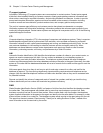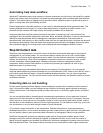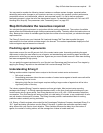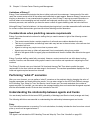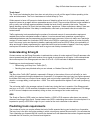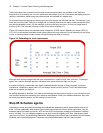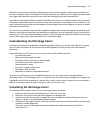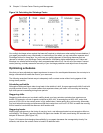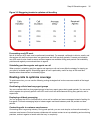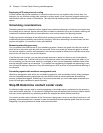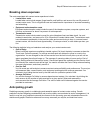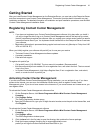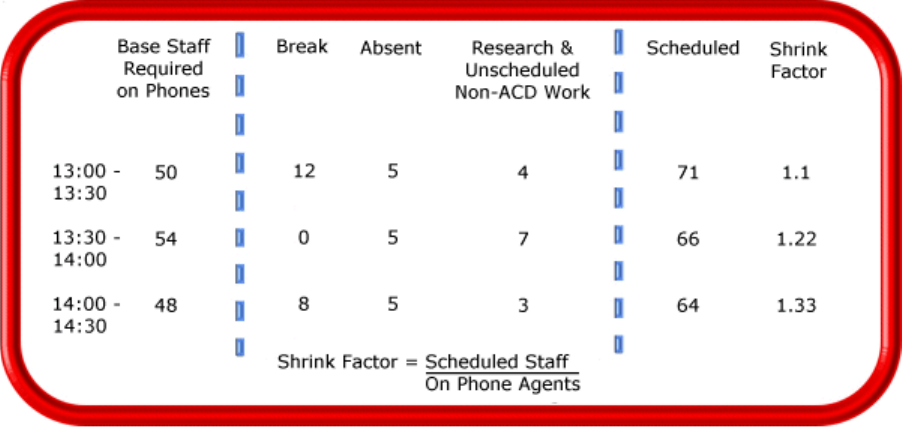
34 Chapter 3 Contact Center Planning and Management
Figure 3-4 Calculating the Shrinkage Factor
You multiply shrinkage values against the base staff required on telephones when setting future schedules. If
your agent requirements vary considerably on certain days of the week, you can calculate a separate set of
Shrinkage Factors for these days. You must use your good judgement in identifying absences that are
relevant to include in your Shrinkage Factor calculations. Anticipating higher absenteeism on Fridays and
Mondays is a safe bet while factoring in daily compassionate leave is not. As with all of the steps in contact
center planning, routinely assess the accuracy of your shrinkage predictions and adjust them as required.
Optimizing schedules
Now that you have adjusted your agent requirement to account for unanticipated absences, the next step is to
design a schedule that makes the most of your resources.
The following examples illustrate ways to adequately staff a contact center without having agents sit idle
during slower periods.
Scheduling split shifts
Although not everyone likes to take a long break in the middle of a shift, for some agents split shifts fit well with
priorities outside of work. For contact centers that experience heavy call traffic in the morning and evening,
split shifts prevent overstaffing during these periods.
Staggering shifts
Staggering shifts allows you to maintain staffing levels over busy periods or periods when agents are on
breaks. For example, one set of agents could start at 8:00 A.M., a second group at 9:00 A.M., and a third
group at 10:00 A.M. so the contact center is fully staffed when it starts getting busy mid morning. Alternately,
you could schedule morning and afternoon shifts that overlap from noon until 1:00 P.M. to enable the morning
shift to break for lunch while the afternoon shift handles calls.
Staggering breaks
Making slight adjustments to the timing of morning, lunch, and afternoon breaks has a tremendous effect on
call handling. The Erlang C equation predicts 28 agents can handle 300 calls, each lasting 280 seconds and
delayed 20 seconds. (See Figure 3-5.)
Figure 3-5 illustrates that changing the availability by one agent decreases the average delay time by five
seconds, and allows the contact center to handle 16 additional calls.



